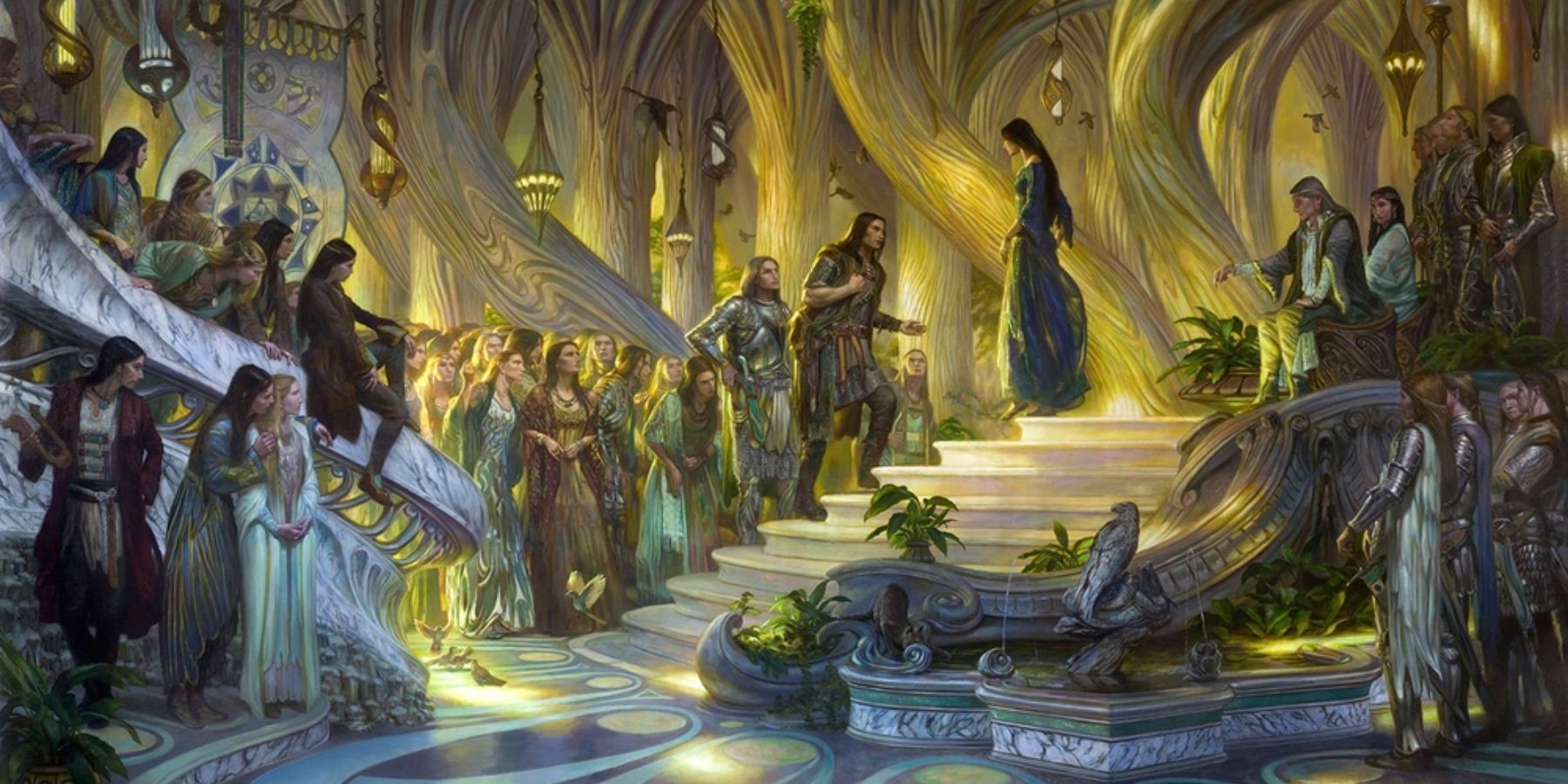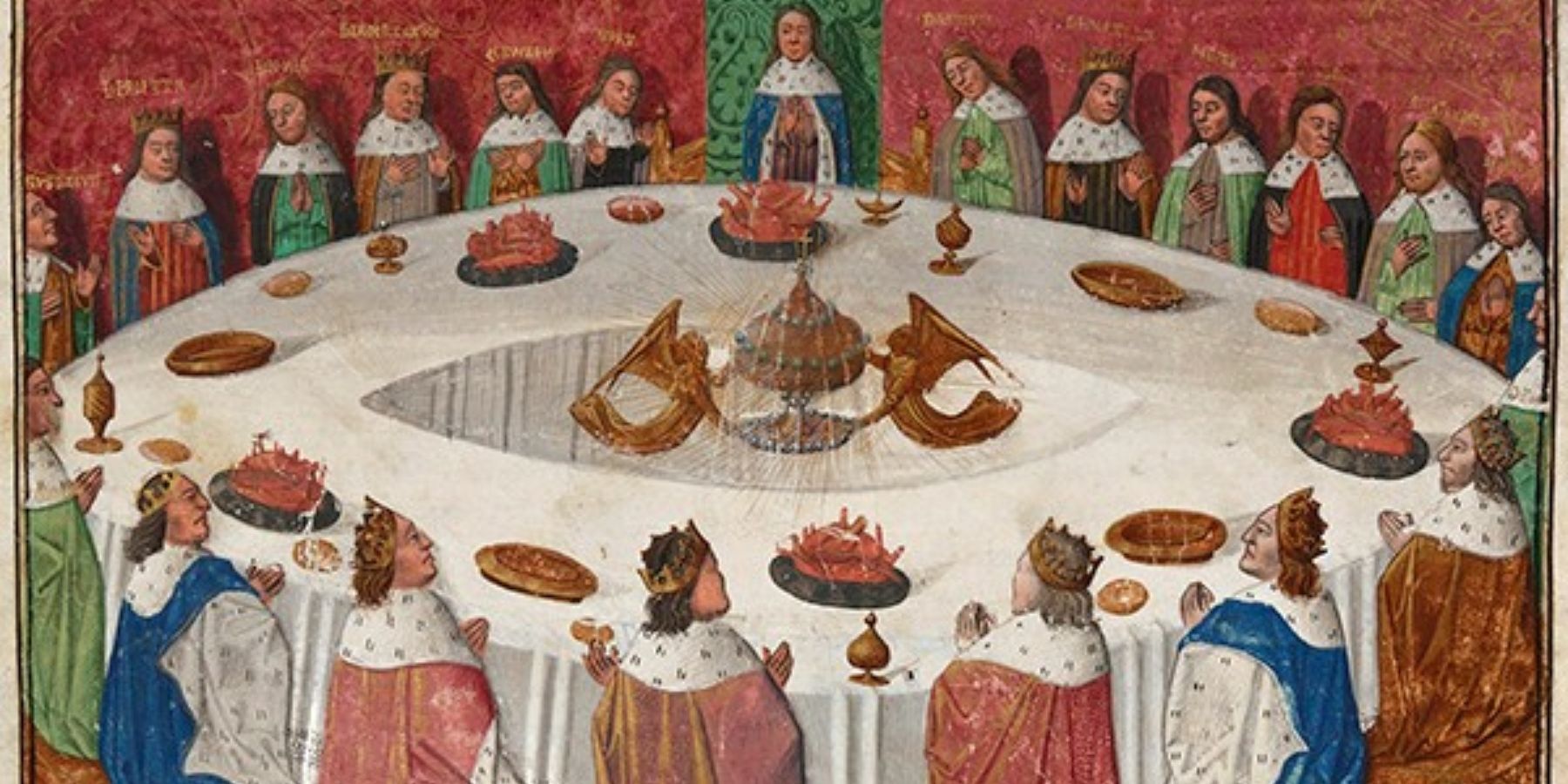For those who haven’t read the vast works of J.R.R. Tolkien, his stories are alive and enriched far beyond the world of The Hobbit and the Lord of the Rings. Middle Earth is made richer by great tomes like The Children of Hurin and the Unfinished Tales, as well as shorter delights like The Adventures of Tom Bombadil, and Leaf by Niggle. But probably the most famous of his stories outside the two most well known tales in Middle Earth is The Silmarillion, which exists as a kind of lore or history of what happened in the early ages of the world, before the One Ring was ever made.
The Silmarillion is, in essence, an origin story of the world and the ancient beings of Middle Earth, and how they were created. It is a detailed and poetic introduction to the landscape and the great seas and how they came to be, and of the people who shaped them and the other treasures of Middle Earth, before the Elves and Men were awoken. Every great Fantasy story needs an epic world as its back-drop, but The Silmarillion goes one step further than that. So what inspired Tolkien to write this amazing legend in the first place?
The answer is a combination of his English heritage, his literary studies at university, and his love of myths and lore from around the world. Tolkien and his brother grew up on stories of great dragons and mighty beasts that came from across the seas, in Scandinavian stories and German fairytales. This love only grew when he attended Oxford and started studying Icelandic Sagas and Celtic folklore. But during this time, Tolkien noticed a separation between the Cosmology of religion and their creation myths, and the seemingly "lesser fairy stories that were taken as whimsical delights for children and nothing more."
It was at this point that he decided he wanted to create an origin myth that masterfully combined the two, and brought all the elements that he loved from fairytales into a more formative and impressive cosmological myth. For this new work, where better to base it than in England, in the forests and hills that captivated so much of his childhood.
In a letter to Milton Waldon in 1951, Tolkien sets out this desire:
‘I was, from an early age, grieved by the poverty of my own beloved country: it had no stories of its own (bound up with its tongue and soil), not of the quality that I sought, and found (as an ingredient) in legends of other lands. […] Of course there was and is all the Arthurian world, but powerful as it is, it is imperfectly neutralized, associated with the soil of Britain but not with English; and does not replace what I felt to be missing.’
He explains that he felt there was a certain element of disbelief, even ridicule within the fanciful stories of England, and that they didn't really do justice to the majesty of his homeland.
‘I had a mind to make a body of more or less connected legend […] which I could dedicate simply to England, to my country. It should possess the tone and quality that I desired, somewhat cool and clear, be redolent, of our air […] and while possessing (if I could achieve it) the fair elusive beauty that some call Celtic (although it is rarely found in genuine ancient Celtic things), it should be high, purged of the gross , and fit for the more adult mind of a land long now steeped in poetry.’
In the same way then, that hobbits represent the idyllic life of the English countryside, The Silmarillion represents that vast beauty and intelligence that exists within its peoples and it’s lands. As one of the older settlements on Earth, the UK hosts a whole wealth of history, from castle ruins to copper and tin mines. It also holds remnants of many other cultures, like coins from Viking ships that invaded, and tracks that were built by the Romans. Tolkien felt that it was important to give England an origin story in its own right, and so he based The Silmarillion, The Hobbit, the Lord of the Rings and everything that came after them in the place that was so close to his own heart.
It is difficult to say whether Tolkein achieved his mission of creating a beautiful English origin story or not, because many fans don't realize that this is what he was setting out to do in the first place. Although The Silmarillion, as well as Tolkien's subsequent works, are certainly lyrical and effective creation stories, which have a very charming and idyllic English countryside feeling to them, this is unfortunately overshadowed by the fact that Peter Jackson directed his films in New Zealand. The Lord of the Rings has become associated worldwide with the breathtaking landscapes of the New Zealand wilderness, and rightly so, as the locations that were shot in perfectly fit the incredible dynamic that Tolkien had pictured for Middle Earth. However, although it did wonders for the New Zealand economy, and made the country an amazing tourist destination with its Hobbiton Movie Set Tours, this contributed towards people's lack of understanding that Tolkien was, in his stories, in his lifetime, and in his heart of hearts, an Englishman. Above all else, he wanted his stories to be a way for his country to be remembered.
Source: The Silmarillion by JRR Tolkien






